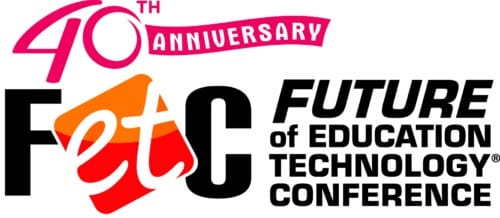by Zach Vander Veen
When I started teaching, one of the central engagement points between parents and the school was a dance. We served a mostly Latino population, and they loved to dance. It was a frequent challenge to get a substantial amount of parents to attend parent-teacher conferences. By hosting a school-wide dance with the opportunity to watch (and join) their kids dancing EDM Salsa, we would get a huge turnout. We had only caveat to going into the dance hall: You had to participate, for a brief moment, in fellowship with your kid’s teacher.
The American philosopher John Dewey frequently reflected on the role schools play in providing a foundation for a community. In his 1902 essay “The School as the Social Center” he wrote:
“[Schools] must provide means for bringing people and their ideas and beliefs together, in such ways as will lessen friction and instability, and introduce deeper sympathy and wider understanding.”
Schools bestow, to some extent, the character of the community. The community, in turn, lifts the school. Schools provide the pulse of a community. And why not? We all have vested interests in raising children.
In the same essay, Dewey celebrates the role of technology in accomplishing the exchange of ideas and the stability of society. While he principally focused on the ever-decreasing costs of knowledge transfer and transactions, he did weigh the risk and danger of technology, as a tool, used for social ill.
What would Dewey think of our modern world? With social media, Wikipedia, ubiquitous connectivity and the price of knowledge effectively nil?
What might we say about the modern technology landscape and its unusual and unique abilities to change the equation of the social bond between schools and the community?
Observations on Bringing the Community Together (or Apart)
If we define the community as students, parents, school employees, local businesses and nonprofits, then we see technology affecting their bonds with schools as the nexus.
Social media and tools that support it (especially smartphones) have been quite the boon for schools when it comes to communications and public relations. By supporting constant feeds into Facebook, Twitter, LinkedIn, and Instagram, schools find many of the eyes within a community.
To be sure, social media is a double-edged sword as rumors, innuendos, and basic human nature express themselves without any sense of quality control. Some studies indicated negative social interactions within a geographical neighborhood can spill into and be amplified within the virtual neighborhood.
In addition to social media, we’ve seen schools notice trends within their community pertaining to vocational needs. Beyond opening their doors and having their own technology such as computers and maker spaces available, they also take advantage of social networks, municipality data, and non-profit events to attract parents into the learning community.
We Have Room for Improvement.
From the perspective of a teacher, a parent, and a community member, I believe we see excessive friction on strengthening the bonds between schools and the community. Despite the increases in knowledge transactions, we still have silos and noise. How might new technology platforms, different types of social media, and a clearer understanding of schools as a central organizing principle of a community best support Dewey’s vision of “deeper sympathy and wider understanding”?
First, consider where the eyes frequent. What systems do students and staff use daily? Are there opportunities for the community at large to participate in such systems to help kids?
Also, think intentionally about how to connect everyone and for what purpose.
For example, say the local YMCA wants to help tutor students. It would be wonderful for the local YMCA to safely, with little friction, connect with students and their parents. Specific platforms and social networks could help align these two groups within the community.
A Local Observation
My local school district recently held a bond levy to build new schools. While talking to a Nepali neighbor about the levy, I noted that her support and sense of community to the local schools were quite enthusiastic.
She smiled and gave a reason. When she first came to the United States, she didn’t speak any English. The school put her and her family in touch with a local church that held ESL classes in the art room of the secondary campus. They were able to use the school’s technology (network, Chromebooks, and various platforms for communications) to grow in their understanding of English. Now they own a store on one of the busiest roads in the neighborhood. It’s quite popular.
I wanted to know why they came to our neighborhood out of all the other places in the US. She laughed. She found out about the community from friends. How?
They shared a Facebook post sponsored by the school district.
Author
 Zach Vander Veen is the cofounder and VP of Instruction at Abre Inc., which provides an education management platform that delivers connected apps designed for schools who use the web to manage information and to deliver instructional content. He’s worn many hats in education including history teacher, technology coach, administrator, and director of technology. He loves learning, teaching, traveling, and seeking adventures with his family.
Zach Vander Veen is the cofounder and VP of Instruction at Abre Inc., which provides an education management platform that delivers connected apps designed for schools who use the web to manage information and to deliver instructional content. He’s worn many hats in education including history teacher, technology coach, administrator, and director of technology. He loves learning, teaching, traveling, and seeking adventures with his family.
Zach’s primary digital footprints can be found:
Portfolio and Blog: https://edlighten.net
Twitter: @zjvv77
Zach Vander Veen will be presenting at the Future of Education Technology Conference (FETC):
W062$ | Student-Created Web Apps! Abre App-a-thons for All
The 40th anniversary Future of Education Technology Conference (FETC) will take place January 14-17, 2020 in Miami, Fla. Registration is now open at Future of Education Technology Conference (FETC)
Further Reading
- edCircuit –
- edCircuit –
- edCircuit –


